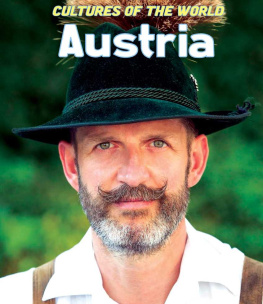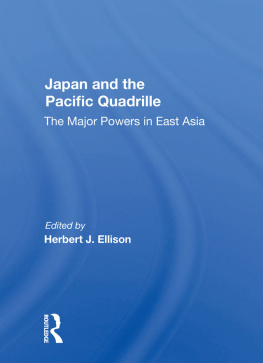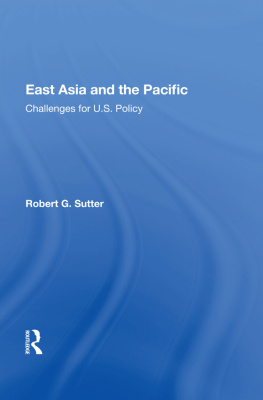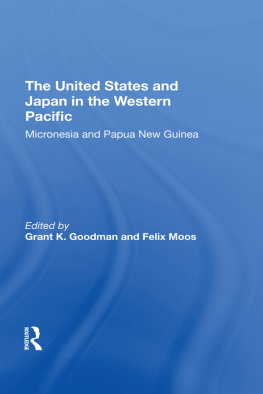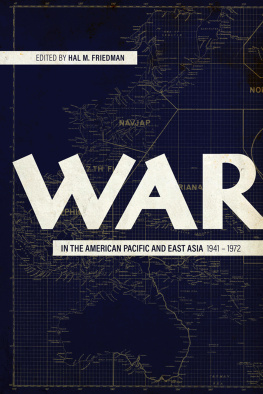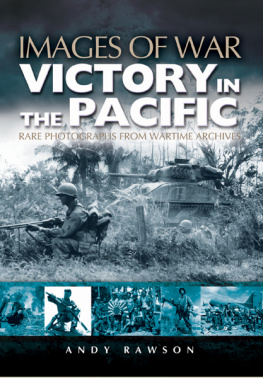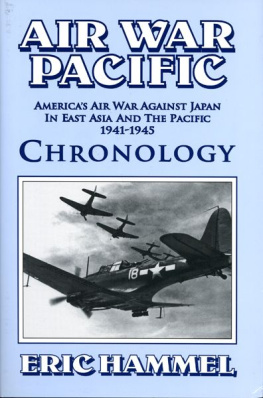Sean Sheehan - World War II. The Pacific
Here you can read online Sean Sheehan - World War II. The Pacific full text of the book (entire story) in english for free. Download pdf and epub, get meaning, cover and reviews about this ebook. year: 2012, publisher: Encyclopaedia Britannica;Britannica Digital Learning, genre: History. Description of the work, (preface) as well as reviews are available. Best literature library LitArk.com created for fans of good reading and offers a wide selection of genres:
Romance novel
Science fiction
Adventure
Detective
Science
History
Home and family
Prose
Art
Politics
Computer
Non-fiction
Religion
Business
Children
Humor
Choose a favorite category and find really read worthwhile books. Enjoy immersion in the world of imagination, feel the emotions of the characters or learn something new for yourself, make an fascinating discovery.

- Book:World War II. The Pacific
- Author:
- Publisher:Encyclopaedia Britannica;Britannica Digital Learning
- Genre:
- Year:2012
- Rating:5 / 5
- Favourites:Add to favourites
- Your mark:
- 100
- 1
- 2
- 3
- 4
- 5
World War II. The Pacific: summary, description and annotation
We offer to read an annotation, description, summary or preface (depends on what the author of the book "World War II. The Pacific" wrote himself). If you haven't found the necessary information about the book — write in the comments, we will try to find it.
World War II: The Pacific concentrates on how events unfolded in the Far East in the titanic struggle between Japan and the forces of the United States and its allies.
World War II. The Pacific — read online for free the complete book (whole text) full work
Below is the text of the book, divided by pages. System saving the place of the last page read, allows you to conveniently read the book "World War II. The Pacific" online for free, without having to search again every time where you left off. Put a bookmark, and you can go to the page where you finished reading at any time.
Font size:
Interval:
Bookmark:

E-book published in 2012 by Encyclopdia Britannica, Inc., in association with Arcturus Publishing Limited, 26/27 Bickels Yard, 151-153 Bermondsey Street, London, SE1 3HA. Britannica, Encyclopdia Britannica, and the Thistle logo are registered trademarks of Encyclopdia Britannica, Inc.
Please visit our web site at: www.worldalmanaclibrary.com
For a free color catalog describing World Almanac Librarys list of high-quality books
and multimedia programs, call 1-800-848-2928 (USA) or 1-800-387-3178 (Canada).
World Almanac Librarys fax: (414) 332-3567.
Library of Congress Cataloging-in-Publication Data
Sheehan, Sean, 1951
World War II: The Pacific / by Sean Sheehan.
p. cm. (Atlas of conflicts)
Includes bibliographical references and index.
ISBN 978-1-61535-605-8 (e-book)
1. World War, 1939-1945CampaignsPacific AreaJuvenile literature. [1. World War, 1939-1945
CampaignsPacific AreaMaps for children.] I. Title. II. Series.
D767.S5296 2004
940.5426dc22
2004045159
This North American edition first published in 2005 by
World Almanac Library
330 West Olive Street, Suite 100
Milwaukee, WI 53212 USA
This U.S. edition copyright 2005 by World Almanac Library.
Original edition copyright 2004 by Arcturus Publishing Limited.
Additional end matter copyright 2005 by World Almanac Library.
Produced by Arcturus Publishing Limited.
Series concept: Alex Woolf
Editor: Philip de Ste. Croix
Designer: Simon Burrough
Cartography: The Map Studio
Consultant: Paul Cornish, Imperial War Museum, London
Picture researcher: Thomas Mitchell
World Almanac Library editor: Gini Holland
World Almanac Library design: Steve Schraenkler
World Almanac Library production: Jessica Morris
All the photographs in this book, except for that appearing on page , were supplied by Getty Images
and are reproduced here with permission. The photograph on page was taken by Joe Rosenthal and is reproduced courtesy of Popperfoto.
Editors Note:
In Japanese and Chinese, family names are placed first, but they are used in this book as given names as they were by the West during World War II. The exception is Mao Zedong, who continued as a leader until his death in 1976, and became internationally known, with correct reference to his family name, as Chairman Mao.
All rights reserved. No part of this publication may be reproduced, stored in a retrieval system, or transmitted in any form or by any means, electronic, mechanical, photocopying, recording, or otherwise, without the prior written permission of the copyright holder.
1 2 3 4 5 6 7 8 9 08 07 06 05 04

JAPANESE VICTORIES

Japanese troops parade through the Chinese city of Shanghai, which they captured in November 1937 after more than four months of fighting.
A fter many centuries of isolation from most of the world, Japan was well on its way to becoming a modern country by the 1930s. With seventy million people to feed, Japan welcomed Western technology but lacked natural resources, such as oil and rubber, which were vital for a modernizing country. Unlike nations such as Britain and France, Japan also lacked an overseas empire in Asia that could provide it with wealth and natural resources. To remedy this, Japan took aggressive action to occupy Manchuria (a region in northern China) in 1931. Six years later, Japan extended its control by going to war with China. This 1937 invasion of China, however, did not lead to a complete victory there.
A WAR ECONOMY
During the 1930s, governments in Japan spent more and more on their military buildup. These statistics show Japan developing a war economy.
Military budget as percentage of total government spending:
1931 29 percent
1932 38 percent
1933 39 percent
1934 44 percent
1935 47 percent
1936 48 percent
1937 72 percent
1938 75 percent
1939 72 percent
1940 66 percent
From The Oxford Companion to World War II, edited by I.C.B. Dear
When World War II started in 1939, it was at first a European war that mainly involved Germany fighting other western European nations. This outbreak of war in Europe encouraged Japanese leaders who saw further military expansion as the only way to make their country rich. By 1941, France and the Netherlands had been defeated by Germany, and Britain seemed reluctant to interfere. Japan seized this opportunity to take over the Asian colonies of these weakened European powers. The natural resources of these colonies would enable Japan to defeat China, build up its own empire, and stop relying on imports from hostile foreign countries like the United States.
THE UNITED STATES The United States was the major stumbling block to Japans ambitions. Although only the Philippines and a few islands in the Pacific were under U.S. control, the United States had its own ambitions in the region. The United States particularly wanted to influence events in China, and had no intention of sharing naval power in the Pacific with Japan. In 1941, Japan began to run out of essential imports after the United States restricted its trade. This economic war got more bitter when Japan moved into southern French Indochina (now Cambodia, Laos, and Vietnam). The United States and Britain froze all their Japanese funds and cut essential oil supplies to Japan.
Japan either had to back down, by withdrawing from Manchuria, China, and French Indochina, or seize control of both the European colonies in Asia and their natural resources. This would bring armed conflict with the U.S., but one way of dealing with this threat would be to launch a surprise attack on the U.S. Navy and destroy its Pacific fleet.
Admiral Isoroku Yamamoto, the Commander in Chief of the Japanese Navy, planned a surprise attack on Hawaii that was meant to destroy the U.S. fleet that had been stationed there since the previous year. In late November 1941, Yamamoto sent the code Climb Mount Niitaka for six Japanese aircraft carriers to set sail from the northeast of Japan and travel some 4,039 miles (6,500 km) to Hawaii, maintaining radio silence to avoid detection.

Japan, Britain, France, the Netherlands, and the United States held possessions with key natural resources in the Southwest Pacific before war broke out in December 1941.
On December 7, early in the morning, 183 Japanese planes gathered in a V-formation after taking off from the six aircraft carriers positioned north of Hawaii. It took them more than an hour to reach the island of Oahu, guided to their target by music from a local radio station. Shortly before 8 A.M., bombs began to rain down on the islands harbor and airfields. A second wave of attackers arrived at 8:40 A.M. and inflicted more damage. U.S. losses totaled eighteen sunk or badly damaged ships, including six battleships, 162 aircraft, and the lives of 2,403 servicemen and civilians. The Japanese lost twenty-nine planes and their crews.
Next pageFont size:
Interval:
Bookmark:
Similar books «World War II. The Pacific»
Look at similar books to World War II. The Pacific. We have selected literature similar in name and meaning in the hope of providing readers with more options to find new, interesting, not yet read works.
Discussion, reviews of the book World War II. The Pacific and just readers' own opinions. Leave your comments, write what you think about the work, its meaning or the main characters. Specify what exactly you liked and what you didn't like, and why you think so.


